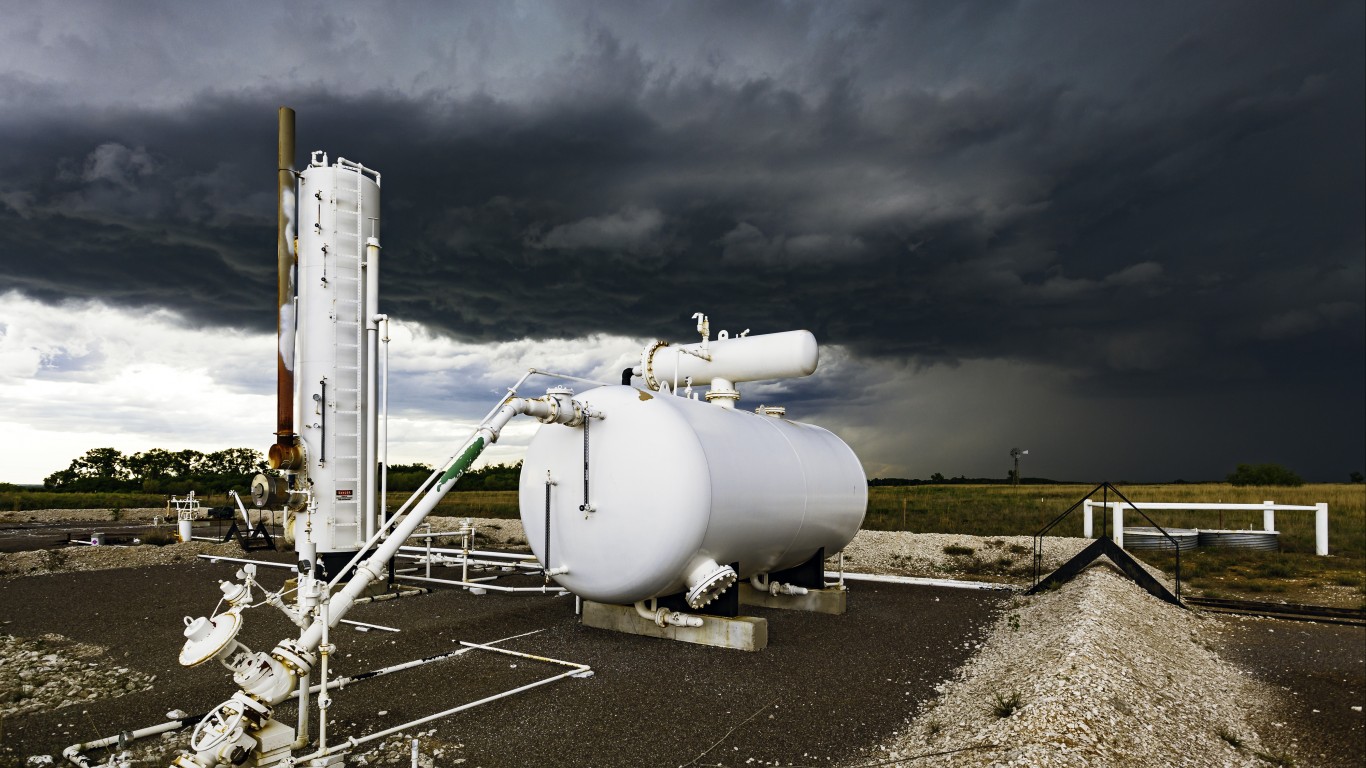
Following Russia’s refusal last Friday to chop production again, Saudi Arabia gave up on OPEC+ and essentially announced that beginning next month OPEC members were free to pump whatever amount of oil they wished. The Financial Times reported this morning that the Saudis would gradually raise production to 12.5 million barrels a day, basically every drop the country can produce.
At the end of December, the United States was the world’s largest producer of oil and other liquids with daily production of nearly 12.9 million barrels a day. Russia was producing about 10.6 million barrels, and the Saudis were pumping around 9.6 million barrels. Iraq, the fourth-largest producer, was extracting about half the Saudi total.
What was just last week a disagreement between partners has now turned into a cage match between Russia and Saudi Arabia. Or, more indelicately, between Vladimir Putin and Mohammed bin Sultan, with the U.S. president seemingly trying his best to get locked in as well. Trump had better be wary of what he hopes for and what weapons he brings with him. Bringing a knife to a gunfight is a sure loser.
Markets are expecting the president to announce how the United States plans to stem the disintegration we saw Monday in the world’s equity markets as a result of the twin terrors of collapsing oil prices and a global economic slowdown spurred by the coronavirus outbreak. Most observers expect the president to call for a further reduction in the federal funds rate and some restraint from both the Russians and the Saudis on the budding oil price war.
The president likely will get what he wants from the Federal Reserve but unlikely to get what he wants from oil autocrats Putin and bin Salman. If the Russians wouldn’t play nice with the Saudis and cut oil production, there’s little reason to believe that Trump will have much success getting either leader to allow the United States to maintain its position as the world’s crude oil kingpin. The United States, through its rising production rates, has been the effective price setter in the oil market ever since President Obama okayed oil exports in 2016.
Neither the Saudis nor the Russians wanted to be price takers and first tried flooding the market in 2014 and 2015, before reversing course and cutting production. Now that that hasn’t worked, they’re going to try flooding the market again. This time, though, the market is already oversupplied and demand had slipped, even before plunging with the spread of the coronavirus.
The president’s other weapons against a flooded oil market are his old faves: trade sanctions and tariffs. In January of this year, the United States ran a trade deficit in goods of about $1.5 billion with Russia and just $227 million with Saudi Arabia. In 2019, civilian aircraft, parts and engines and passenger cars were the chief U.S. exports both to Russia and Saudi Arabia. On the import side, oil and petroleum products accounted for more than $13 billion in $22.3 billion of total imports from Russia and $11 billion in a total of $14 billion of imports from Saudi Arabia (the bulk of that probably went to the Saudi-owned Motiva refinery in Houston).
If the president decides to slap tariffs on petroleum imports from either Russia or Saudi Arabia, the two combatants will simply turn to other customers. At that point, U.S. crude exports will have to be curtailed or sourced from other producers, driving up the price, which is what the Russians and Saudis want to happen anyway. Trade sanctions, too, would have the effect of pushing prices up, because the United States could not make up the lost supply.
With the Saudis, Trump has additional leverage based on the amount the United States contributes to Saudi security. According to the president, the Saudis had by mid-January paid the United States more than $1 billion to offset U.S. costs related to deploying forces in the Middle East. Those forces bolstered Saudi air and missile defense of the country’s critical infrastructure. If the president pushes too hard, those payments (which he does like to boast about) will certainly end.
The smart thing for the president to do would be to leave the oil market alone. It eventually will settle down, and likely that will occur sooner rather than later. The United States has little to gain and more to lose by getting into a three-way cage match over oil prices.
After falling by around 25% on Monday, Brent crude traded up about 6.2% Tuesday morning at $36.50 a barrel, and West Texas Intermediate (WTI) traded up nearly 7% at $33.25 a barrel. That’s still about $9.00 a barrel below Friday’s prices.
Are You Ahead, or Behind on Retirement?
If you’re one of the over 4 Million Americans set to retire this year, you may want to pay attention. Many people have worked their whole lives preparing to retire without ever knowing the answer to the most important question: am I ahead, or behind on my goals?
Don’t make the same mistake. It’s an easy question to answer. A quick conversation with a financial advisor can help you unpack your savings, spending, and goals for your money. With Zoe Financial’s free matching tool, you can connect with trusted financial advisors in minutes.
Why wait? Click here to get started today!
Thank you for reading! Have some feedback for us?
Contact the 24/7 Wall St. editorial team.




